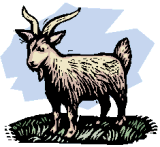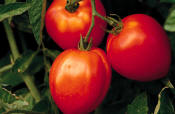

To send a message to an author, click on the author's name at the end of the article.
This Month in Ag Connection | Ag Connection - Other Issues Online

It has been my honor to be able to work on the Ag Connection newsletter from the time it was started. For about the last eight years I have been the editor. Actually, all the ag staff in central Missouri are the editors. I just put the newsletter together after the editing. Most of the ag staff get together to go over articles that are submitted. Editorial changes are suggested. This improves the articles and we hope make them more useful for you. In addition, all of the ag specialists gain knowledge outside their field that will benefit you. I am retiring July 1 and the editing will be done by a new crew. I will miss the contact with many of you readers. It has been a real honor to work with many of you over the years.
This Month in Ag Connection | Ag Connection - Other Issues Online
No one can argue how bad the spring has been-rain, rain, and more rain. Crops are behind, hay is late and farmers are grumpy. The last thing producers want to worry about right now is winter feeding, it seems like a long time away and trying to fight rain and mud hasn't helped. However, now IS the time to think about winter feeding because by-products like distillers grains are at their lowest prices during the summer. Small and large producers should take advantage of buying the wet corn co-products and mixing it with a low quality roughage source such as corn stalks, CRP residue/hay, straw or low-quality fescue. If it is possible, work with neighbors and other smaller producers to split loads of wet distillers grains.
University of Nebraska showed how low-quality roughages could be mixed successfully with wet distillers grains or some other corn co-product. The University of NE research trials included: mixing wet co-products with 25% wheat straw, 29 to 35% corn stalks, 30 to 40% grass hay and distillers grains alone in a bunker silo. These mixes created a very palatable, affordable and nutritious cattle feed. On one farm, for instance in Odessa, NE a producer put up WDGS in Mid-July in 2006 and again in Late August of 2007. They mixed the WDGS with 20% wheat straw and 80% WDGS on an as-fed basis, the cost was $36.75 per ton on an as fed basis and $82/ton on a dry matter basis, quality was 21% crude protein and 45% dry matter.
Instead of using wheat straw producers could use the CRP residue that is now available to them after the bird nesting season is over and mix this with WDGS for a winter feed product that would not only save winter feed costs, but is very nutritious to feed. Producers in Missouri don't have to have a fancy bagger or a bunker silo; you can make a bunker from old moldy hay to store these products in once they are mixed.
Modified wet distiller's grains (MWDGS) do not have as much water and can be stored alone without adding forage. However, if deciding to go this route, producers need to understand that the pile cannot be compacted by driving equipment onto the feed especially in a bunker situation. This could set someone up for a huge mess as the equipment can actually get stuck. There are many examples in NE and IA where producers piled wet corn gluten feed or MWDGS and had very little spoilage (except at the top of the pile). NE and IA researchers recommend covering with plastic or some mechanism to minimize spoilage at the surface under plastic for several months without much spoilage, so if you live close to an ethanol plant producing this product this is something to seriously think about doing this summer.
Livestock producers do have choices this winter and can cheapen their feed costs, by planning now. If you would like more information on storing distillers grains or other corn co-products visit with your livestock or natural resource engineering specialist. For a copy of the manual "Storage of Wet Corn Co-products" from UNL, go to http://beef.unl.edu/home
(Author: Wendy Flatt, Livestock Specialist)
This Month in Ag Connection | Ag Connection - Other Issues Online
The United States meat goat industry is an expanding business and this is evident in Central Missouri. Consumption of goat meat in the U.S. is estimated at 48.4 million pounds, of which 24.5 million pounds is imported.
The increase in popularity of goats as an enterprise is due mostly to increased demand.
Several ethnic groups settling in the U.S. prefer goat meat. Outside of the
U.S., goat meat is the meat protein highest in demand. Goats can potentially
be a profitable enterprise for Missouri producers.

Have you thought about raising goats? Following are some considerations:
How do you determine if it is feasible to start a goat enterprise? A business plan is the "road map" of figuring out where your farm operation is now and determining how to get where you want to be in the future. A business plan has four components including a description of the business, financial plan, marketing plan and management plan. There are tools available to help put together a business plan including: Building a Sustainable Business: A Guide to Developing a Business Plan for Farms and Rural Businesses book (cost about $17 or free to download in pdf) and Finpack Business Plan software for $99.
Some challenges that goat producers face include herd health, fencing, predators and distance to markets. Another challenge is finding pertinent data for Missouri goats. Much of the data available is from other states, so keep in mind things may be differ.
In summary, just like adding any enterprise to your farm research, talk with others in the business, consider resources and risks. If you choose to proceed do not neglect on keeping records. Accurate financial and production records will help in making future decisions and necessary to determine profitability.
Reference: Oklahoma Basic Meat Goat Manual
(Author: Mary Sobba, Ag Business Specialist)
This Month in Ag Connection | Ag Connection - Other Issues Online
Most farmers will sell some timber during their farming career; however the infrequency of the sales can put the farmers at a comparative disadvantage with regard to knowledge of timber marketing and timber taxation. Research at the University of Missouri suggests significant price variation in timber contracts offered in the Midwest. Prior to selling any timber, professional assistance should be sought in determining the quantity and value of your timber, the best way for you to structure the sale of your timber, and the potential tax liability resulting from its disposal.
The two most common methods which farmers utilize in disposing of timber are lump-sum contracts and pay-as-cut contracts. With lump-sum contracts, the farmer is generally paid a lump-sum for the timber regardless of the quantity or tree selection harvested from a given tract of land. The pay-as-cut contract requires the timber purchaser to cut designated trees and to purchase them at an agreed upon unit price.

If a one-year holding period has been met, the tax act passed in 2004 provides that sales of standing timber by farmers or investors qualify for long-term capital gain treatment. Additionally, the income from the sale of timber will not be subject to self-employment tax.
From the tax standpoint, the most common and challenging issue involves determining the tax basis of the timber being sold. Tax basis, i.e. your cost basis, is subtracted from the sale proceeds to determine the amount of taxable gain or loss.
If land is acquired that has standing timber, a portion of the acquisition cost should be allocated to the timber, just as cost would be allocated to other improvements such as fences, water systems, or buildings.
Ideally, the timber basis should be determined at the time of land acquisition. However, if it wasn't, contact your accountant and a forestry consultant to determine a justifiable and reasonable amount of the acquisition cost to be allocated to your timber account.
Timber taxation is an area of tax practice in which few tax professionals specialize. Thus, it is important you educate yourself on the basics of timber taxation and seek assistance from professionals that understand timber merchandizing and taxation.
An excellent online resource is "Timber Dispositions: A Primer on Obtaining Favorable Tax Treatment" http://www.mobar.org/
Your area Department of Conservation forester can be reached at the following locations:
(Author: Parman R. Green, Ag Business Specialist)
This Month in Ag Connection | Ag Connection - Other Issues Online

One of the most revered summer vegetables by home gardeners is the tomato. The fruit typically begins to ripen in mid to late July for most tomato varieties in home gardens, and this is when many tomato fruit disorders are noticed. Some of these disorders may be associated with diseases, and thus symptoms and control of the most common diseases and fruit disorders are presented below.
Tomato Diseases:
Tomato fruit physiological disorders:
* Sanitation includes removing plant debris from the garden, whether it originates in the current growing season or the previous year. Remove affected plants from the garden and destroy them so that they do not act as a source of disease-causing microorganisms. Discard any plant, transplant, or seed piece that does not look healthy. Diseased plants should not be added to home compost piles; the temperature reached in most home compost piles is not high enough to kill plant pathogens.
There are a number of additional diseases and physiological disorders. For more information, including color pictures, see 'Tomato diseases and disorders' from the Department of Plant Pathology by Iowa State University. http://www.extension.iastate.edu/Publications/PM1266.pdf
Common Diseases of the Home Garden by MU Extension provides descriptions and recommended control practices for the popular vegetable crops in Missouri and their most common diseases. http://extension.missouri.edu/publications/DisplayPub.aspx?P=G6203
(Author: James Quinn, Horticulture Specialist)
This Month in Ag Connection | Ag Connection - Other Issues Online

We would like to introduce Dustin Vendrely, our new Agricultural Business Specialist in the Central Missouri region. Dustin grew up on an Alfalfa farm in Southwest New Mexico where he graduated from New Mexico State University with a B.S. in Agricultural Economics/Agricultural Business and a M.S. in Agricultural Economics.
He will be based in Pettis County, but will also serve Benton, Cooper, Morgan, and Moniteau Counties. His background is in water rights and water markets.
This Month in Ag Connection | Ag Connection - Other Issues Online
Date, place, event and contact person are:
This Month in Ag Connection | Ag Connection - Other Issues Online
Publishing Information
Ag Connection is published monthly for Northeast and Central areas of Missouri producers and is supported by the University of Missouri Extension, the Missouri Agricultural Experiment Station, and the MU College of Agriculture, Food and Natural Resources. Managing Editor: Mary Sobba.